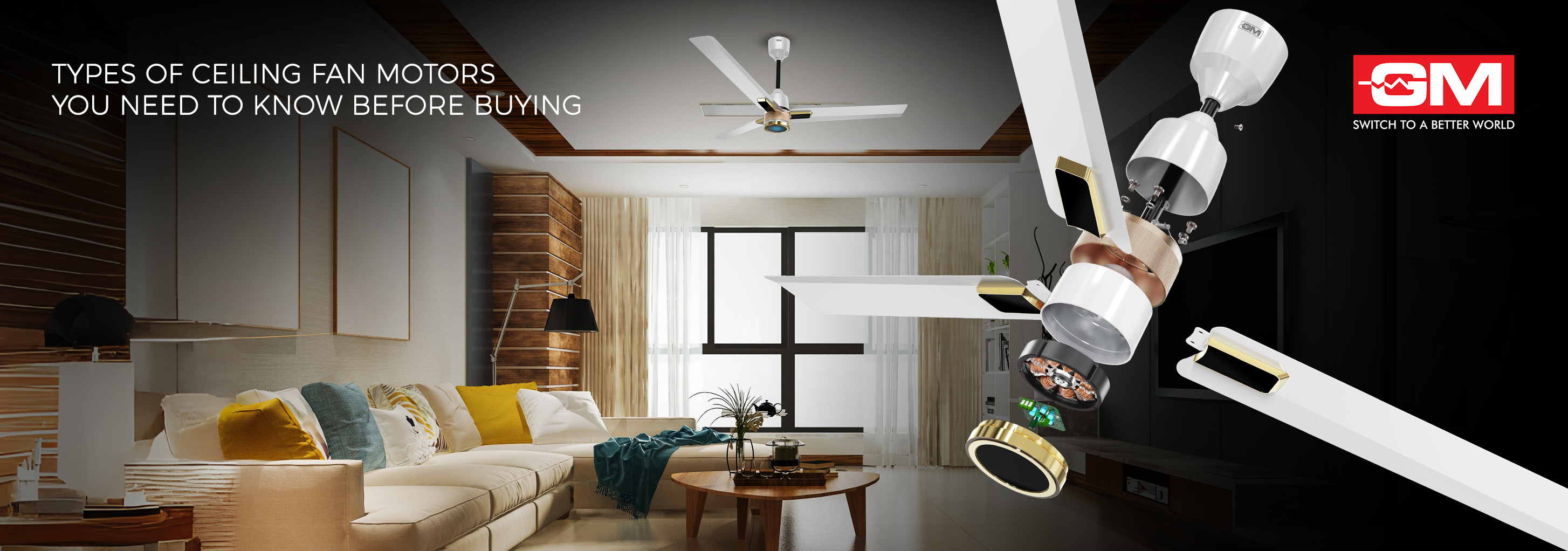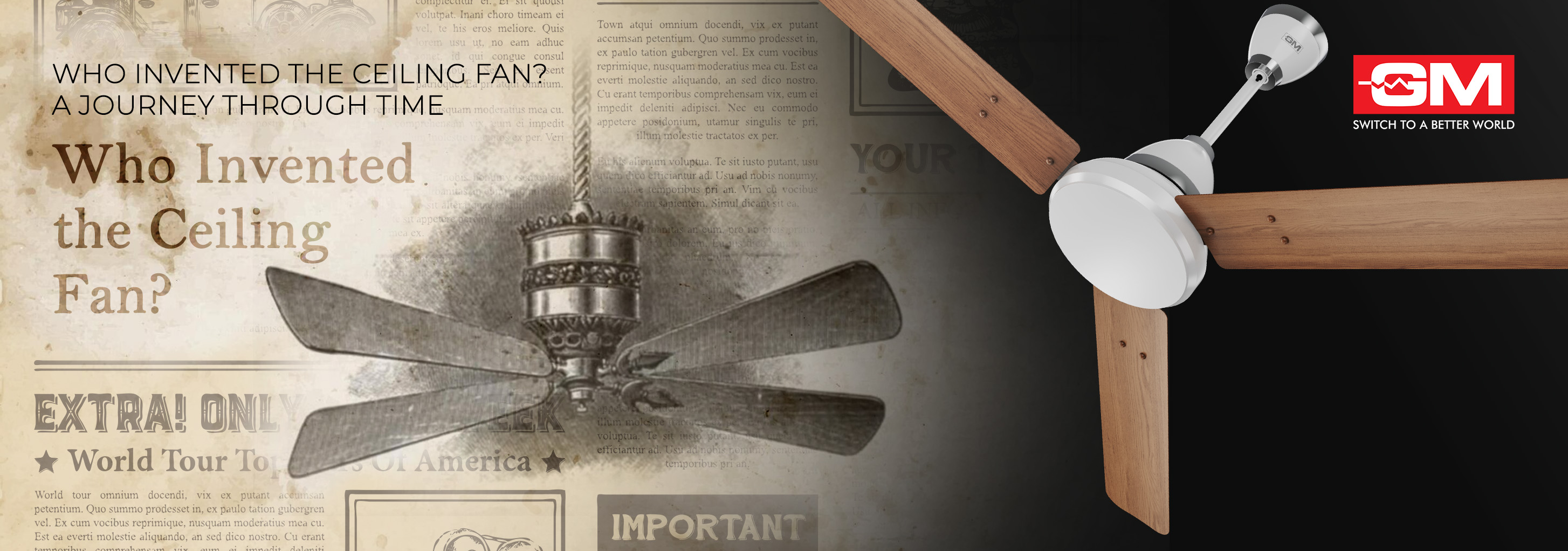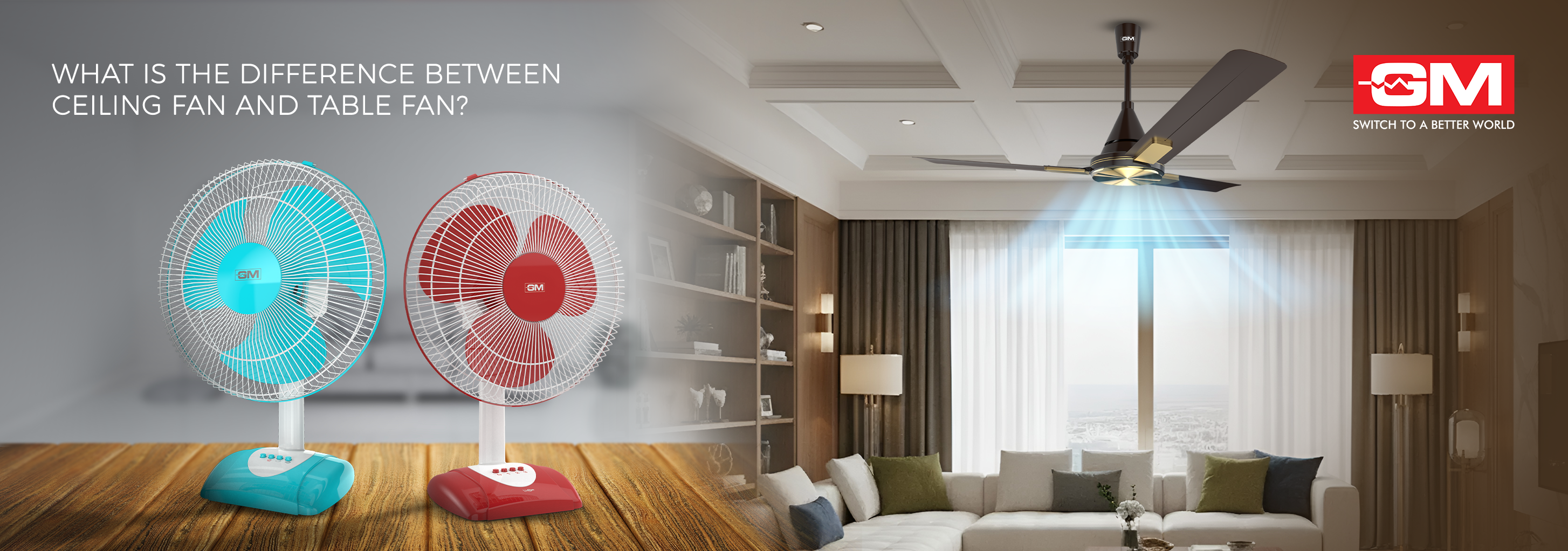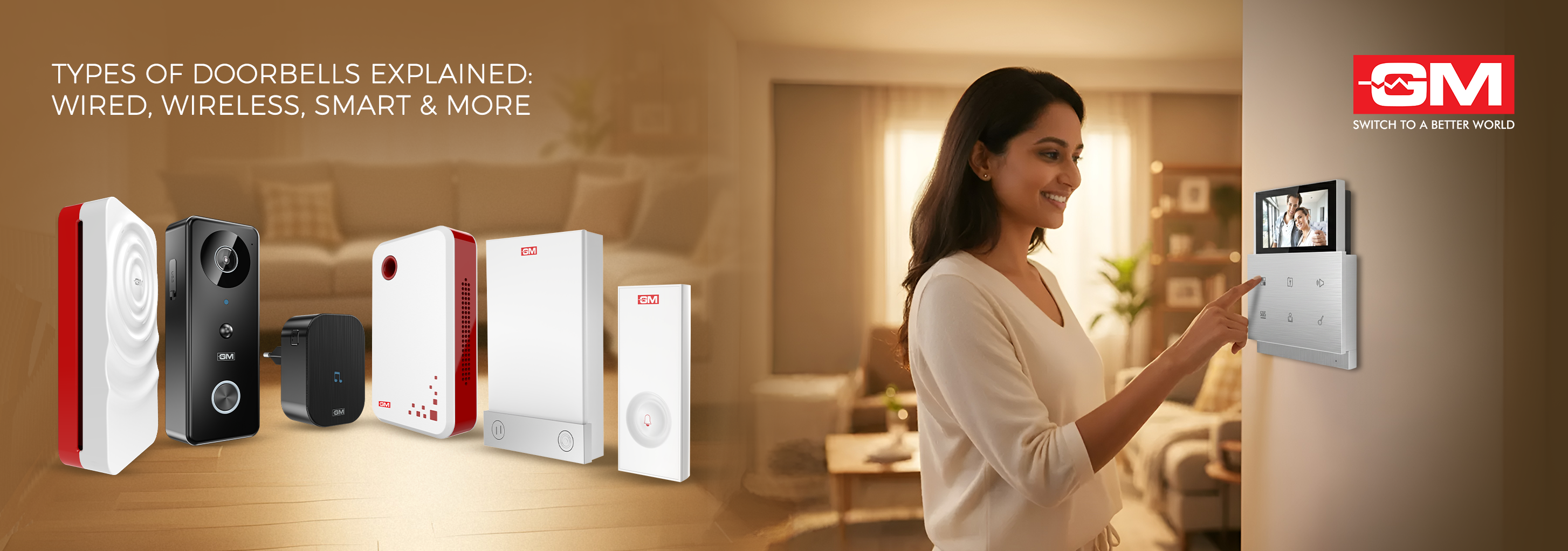Blog
Types of Ceiling Fan Motors You Need to Know Before Buying
Updated on Aug 2025

When upgrading a ceiling fan, we often focus on design, blade size, or features like remote control, while the motor is often overlooked. Yet, it plays a key role in performance, energy efficiency, and long-term savings. Knowing the types of fan motors can help you choose one that cools effectively and lowers your electricity bills. With rising energy costs and smarter living spaces, this choice is more important than ever.
Types of Ceiling Fan Motors
Single Phase Induction Motor – The Old Reliable
The single-phase induction motor is the most common in traditional ceiling fans, known for its simple design and affordability. It uses a capacitor to start and run, making it ideal for basic cooling and often found in fans with wall regulators. However, it tends to get noisy over time and consumes more power, making it less suitable for those seeking energy efficiency or silent operation. Still, it’s a practical choice for guest rooms, rentals, or low-use spaces.
Permanent Split Capacitor (PSC) Motor
The PSC (Permanent Split Capacitor) motor is a step up from the basic induction motor, using separate capacitors for starting and running to ensure smoother, quieter performance. Common in mid-range fans, it offers better speed control and durability. While not as energy-efficient as newer technologies, it’s a solid choice for those seeking quieter operation and reliable performance at a slightly higher cost.
Brushless Direct Current (BLDC) Motor – The Smart, Efficient Choice
BLDC motors are the new energy-efficient standard, running quietly on direct current without brushes. They use up to 60% less electricity than traditional motors and work well with inverters, lasting longer during power cuts. Though pricier upfront, their energy savings, silent operation, and low maintenance make them a smart long-term choice.
Shaded Pole Motor – Not Quite Right for Ceiling Fans
Rarely seen in ceiling fans today, the shaded pole motor is mostly used in appliances like exhaust or pedestal fans. It has a simple design but low torque, making it unsuitable for moving large amounts of air. While inexpensive and easy to produce, it is underpowered and inefficient for ceiling fans. If you encounter a fan with a shaded pole motor, it’s best to avoid it.
Servo Motor – Precision at a Premium
Servo motors are not common in standard ceiling fans but are used in advanced automation systems. They provide precise control over speed and direction, making them ideal for high-end homes or commercial spaces with smart setups. While reliable and accurate, servo motors come with higher costs and complexity, which may be unnecessary for most users. However, for tech enthusiasts and smart home designers, servo motor fans could become
more popular in the future.
Explore the different parts of ceiling fans and their functions.
Ceiling Fan: Which Type of Motor Should You Choose?
There is no one-size-fits-all answer because it depends on where and how you will use the fan. If upfront cost is your priority, a single-phase induction motor can work. For quieter operation and better comfort, a PSC motor is a good step up. But for long-term energy savings, low noise, inverter compatibility, and durability, BLDC motors are the best choice. Servo motors offer advanced control for smart setups but remain niche for now. Understanding motor types helps you choose a fan that fits your needs, ensuring better satisfaction and smarter energy use.
Does the Motor Impact Energy Consumption?
The type of motor directly affects how much power your fan uses. Induction motors consume more energy, which can increase your electricity bills over time. PSC motors are somewhat more efficient but still use a moderate amount of power. BLDC motors are designed to significantly reduce energy consumption, often cutting it by more than half. Therefore, if saving energy is important, choosing the right fan motor is essential.
Ceiling Fan Motors and Noise Levels
Another often overlooked factor is how the motor affects noise. Basic induction motors can develop a buzzing or humming sound over time, especially at higher speeds, which can be distracting in bedrooms or offices. BLDC and PSC motors run much quieter and provide smoother, wobble-free rotation. For a peaceful environment, it’s important to choose a fan based on motor technology, not just appearance.
Wondering how much electricity your fan uses? Read our blog on ceiling fan power consumption for all the details.
To Sum Up
You can buy a fan with sleek blades, fancy lights, and a remote control, but if it has the wrong motor, it won’t perform well. The motor powers the fan, affects your electricity bill, and shapes your comfort. Next time you shop, look beyond the brochure and check the specs to know what’s inside. Knowing this helps you choose better.
Looking to upgrade your fan? Don’t miss our complete guide to buying a good quality ceiling fan.
Frequently Asked Questions
1. Which ceiling fan motor type is most energy efficient?
BLDC (Brushless Direct Current) motors are the most energy-efficient. They consume significantly less power and are ideal for long-term energy savings.
2. Can a BLDC motor fan run on an inverter?
Yes, BLDC fans run efficiently on inverter power and consume much less energy compared to regular fans, making them perfect for backup use.
3. Are PSC motor fans quieter than induction motor fans?
Yes, fans with PSC (Permanent Split Capacitor) motors typically operate more quietly and smoothly than those with basic induction motors.
4. How do I know what motor is in a ceiling fan?
You can find the motor type in the technical specifications on the packaging or in the product manual. BLDC fans are usually labeled clearly and often come with remote controls.
Related Blogs

Who Invented the Ceiling Fan? A Journey Through Time
Ceiling fans are a quiet yet transformative part of life at home, offering comfort, style, and energy savings all year round. But not many of us know about the invention of the ceiling fan and how this humble device revolutionised modern living. To a
Read More
What is the Difference Between a Ceiling Fan and a Table Fan?
Fans are easy to use and save energy, so most people use them to keep a room cool and comfortable. But before you buy one, you should know what makes a ceiling fan different from a table fan. They both move air, but they do it in very different ways
Read More
Types of Doorbells Explained: Wired, Wireless, Smart, and More
A doorbell is one of the most important parts of a home or office, but it's also one of the most common things that people forget about. It not only lets visitors know you're home, but it also makes your space more convenient, safe, and stylish. The
Read More
How to Use a Steam Iron Safely and Effectively?
No matter if you're going to work, a meeting, or a party, wearing a crisp, wrinkle-free outfit can boost your confidence right away. But you need to know how to use a steam iron correctly to get that perfect finish. A steam iron isn't just another ap
Read More